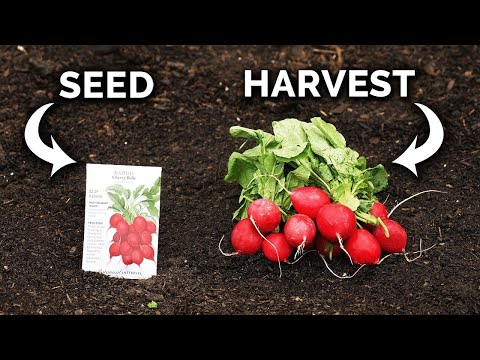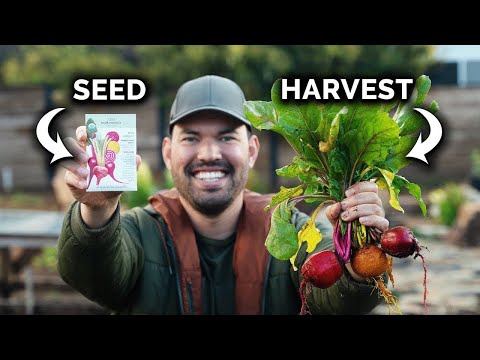October is upon us, with the spooky season in full swing and the holiday season soon to follow. This means the end of tomatoes, peppers, and other warm-weather crops for many gardeners as the first frost approaches. Worry not; there are still tons of vegetables you can plant.
There are many cool-weather crops out there that can survive a frost or two or even grow all winter long. This is definitely the case for warm-region gardeners, but those of us in cooler zones have plenty of options, too.
Cruciferous vegetables, root veggies, and all sorts of greens thrive this time of year. In fact, October is pretty much prime time for planting anything that bolts above 70°F (21°C), giving you trouble in spring and summer. (We’re looking at you, broccoli!)
Whether you have reserved space all season long or recently freed up some garden real estate, October is the perfect time to start these cool-weather crops.
Spinach
Matador Spinach Oleracea Seeds
Carrot
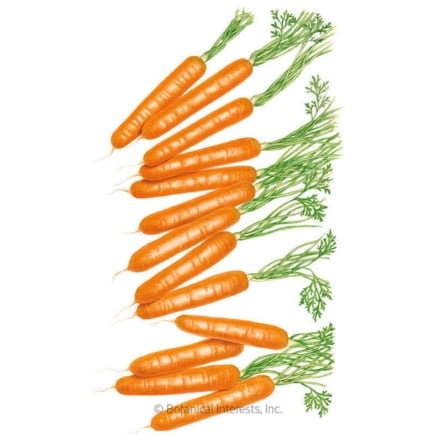
Little Finger Carrot Seeds
Radish
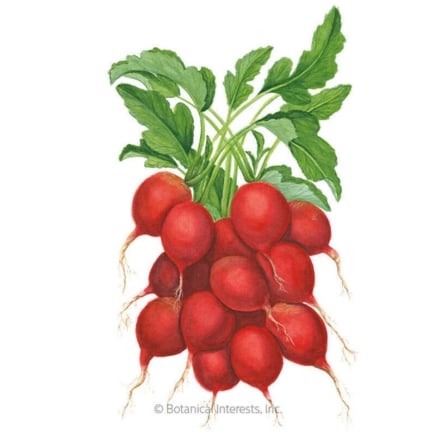
Cherry Belle Radish Seeds
Spinach
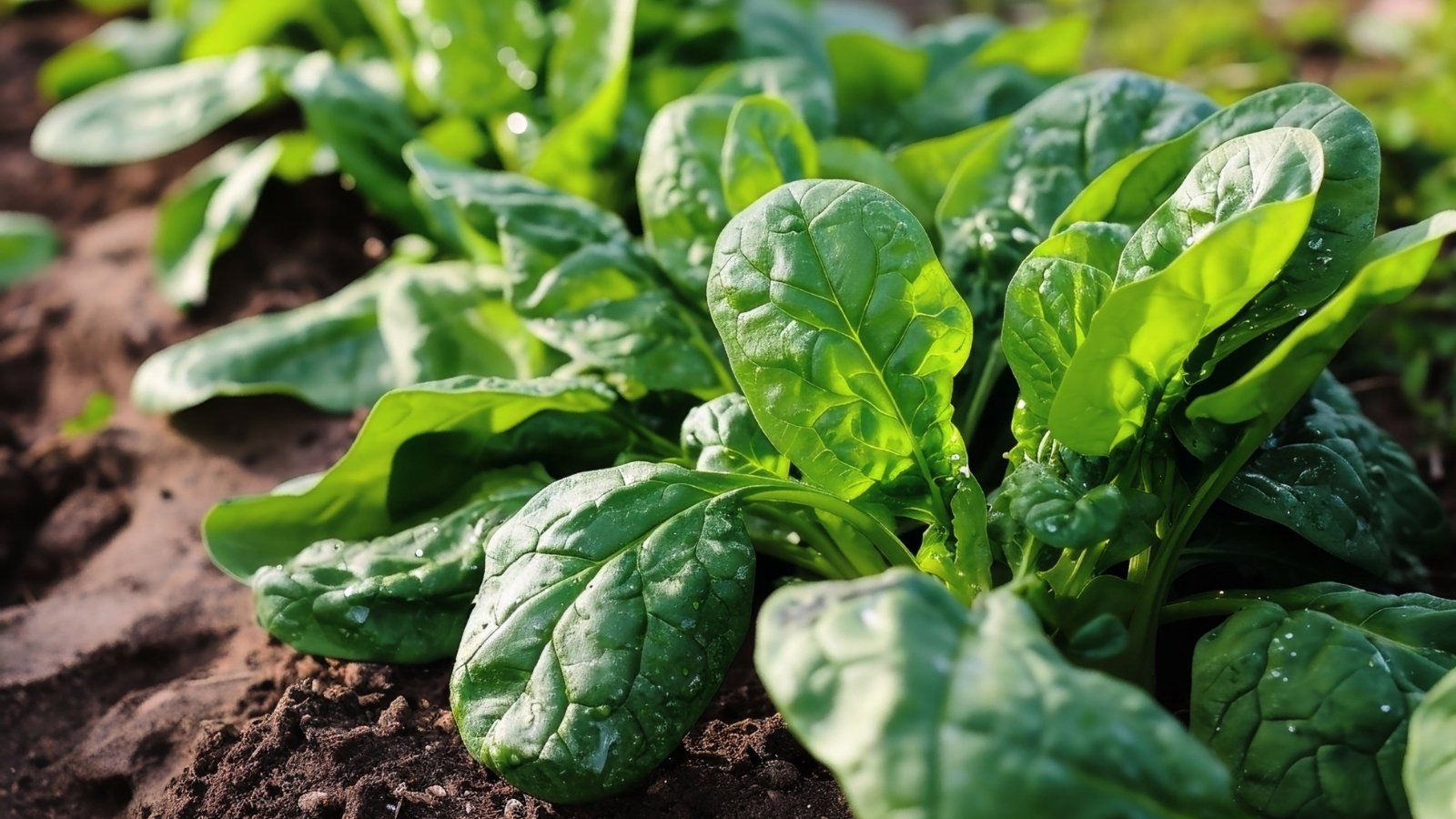
Spinach is one of the best crops to plant in October. As a cool-weather veggie, it grows best in temperatures within the 50 to 60°F (10-16°C) range, so spinach tends to thrive in the fall. Plus, frost won’t damage spinach. It’s temperatures below 20°F (-7°C) that can begin to cause problems.
Depending on where you live, this means that October-planted spinach can survive much or even all of the winter. You may find yourself harvesting leaves for fresh salads well into the chillier months. ‘Matador’ spinach may even survive sub-zero temperatures.
Many gardeners struggle when growing spinach in spring or summer because it bolts when temperatures reach around 80°F (27°C) or even when the days get longer in June, even if it’s still cool outside. Bolting isn’t as great of a concern in fall.
Carrots
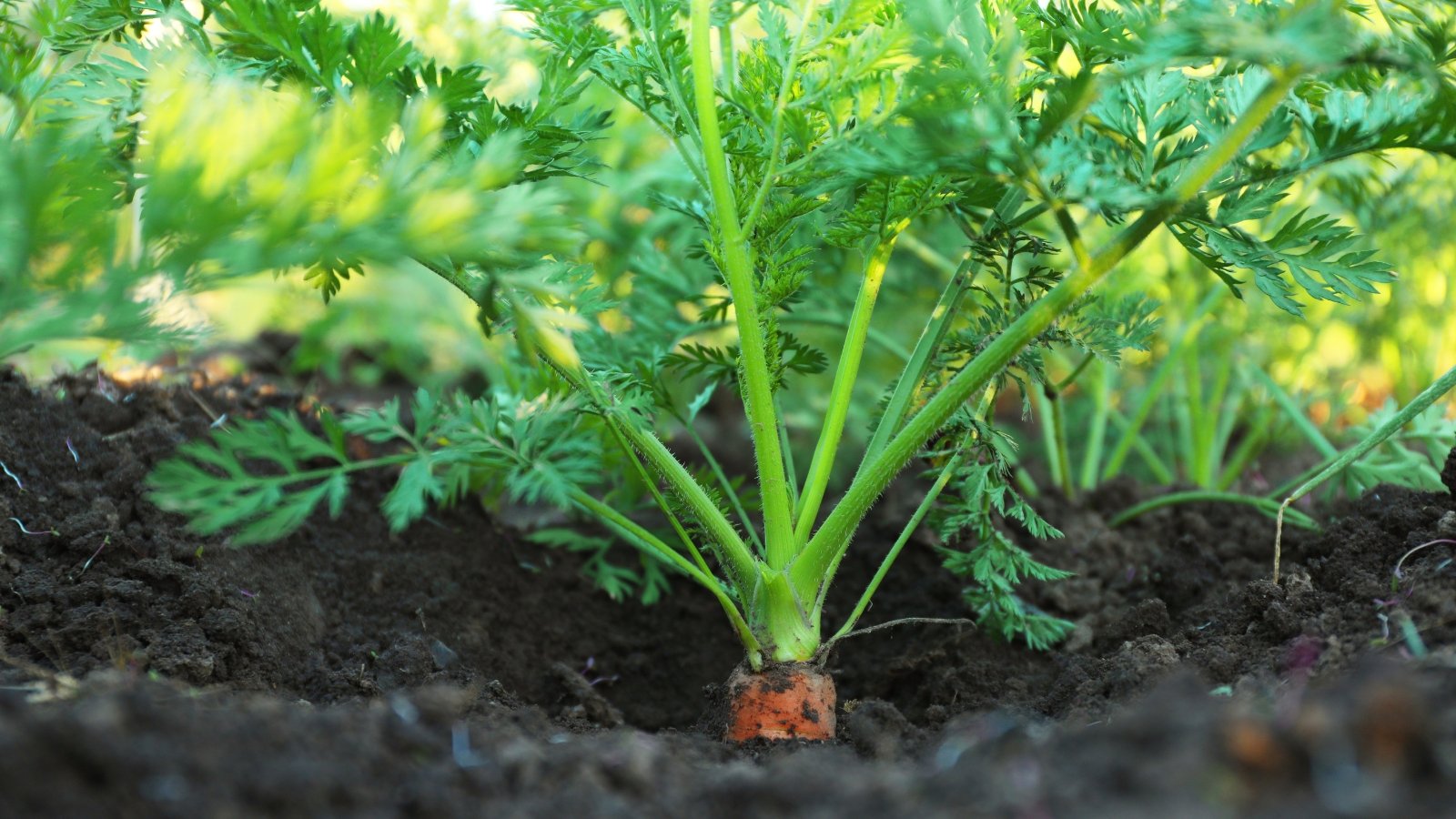
Carrots are often ready to harvest around eight to ten weeks after planting, so if you direct sow them in October, they should be available for a winter harvest. These frost-tolerant root vegetables will survive the cooling temperatures.
In fact, you can over-winter your carrots until spring, even in fairly cold regions, by covering them with mulch. Though the carrots won’t grow much when the soil is below freezing, they will be just fine. You can continue to harvest them as desired. Collect any remaining carrots in spring before they begin to flower.
If your intent is to plant in October and harvest within a couple of months, check out the classic ‘Danvers 126,’ which should be ready in about 65 days, or the 3-inch ‘Little Finger’ cultivar, which should be ready in as little as 57 days.
Peas
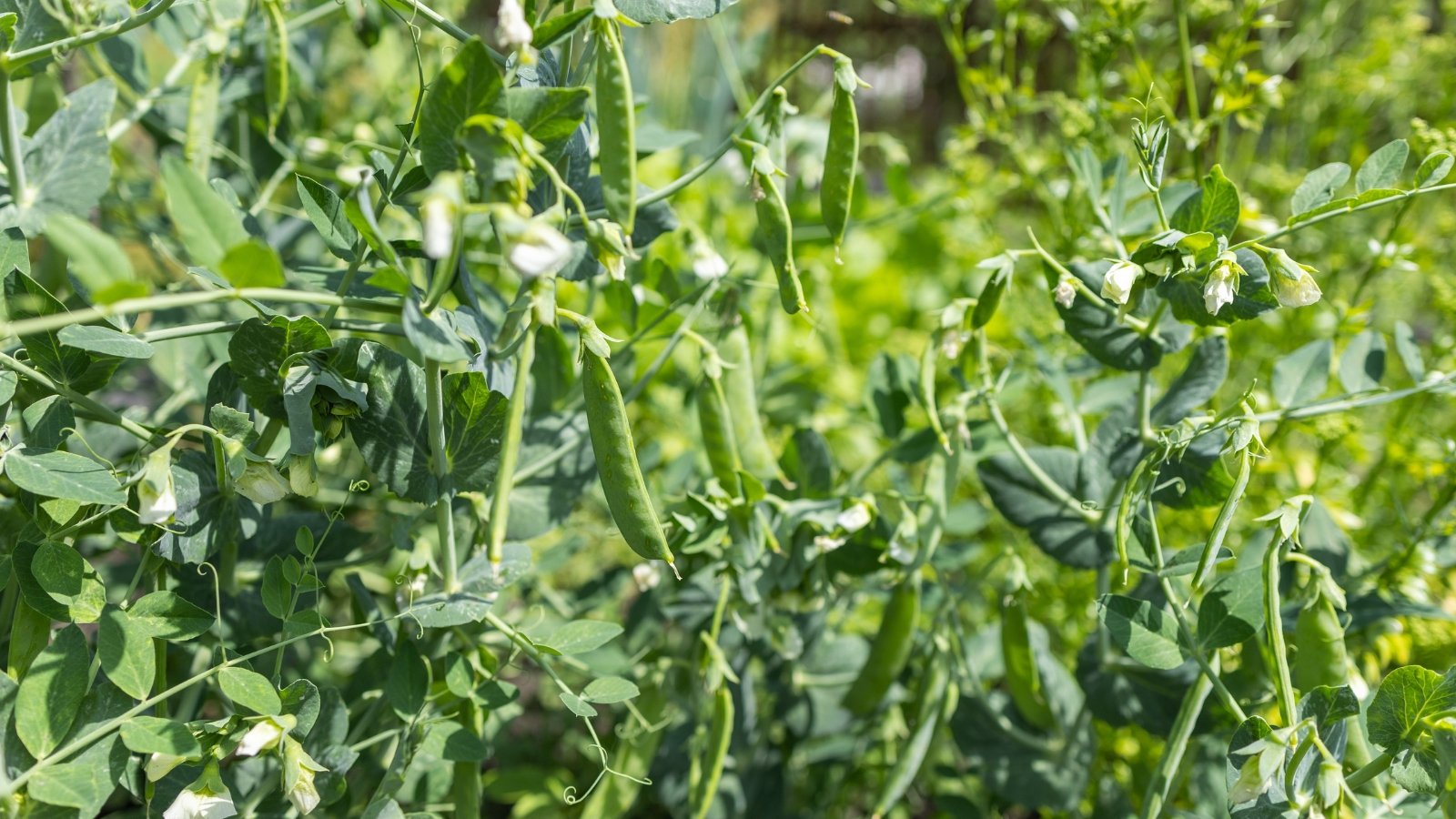
You can plant many cultivars and varieties of peas this time of year, as they only need about two months to mature and tolerate frost well. Some peas survive temperatures down to zero. Peas have an extremely fast growth rate, so they’ll be ready for harvest quickly, especially if you get them started early in the month.
‘Wando’ is a cold-tolerant cultivar that’s been around for decades, known as a great option for sowing in fall and harvesting in winter in more mild climates. Snow peas like ‘Oregon Sugar Pod II’ are ready in as little as 60 days.
Another benefit of planting peas in fall is that there are fewer pest concerns. Pest activity tends to dwindle once it gets chillier outside. Pea weevils may even be hibernating by October.
Radishes
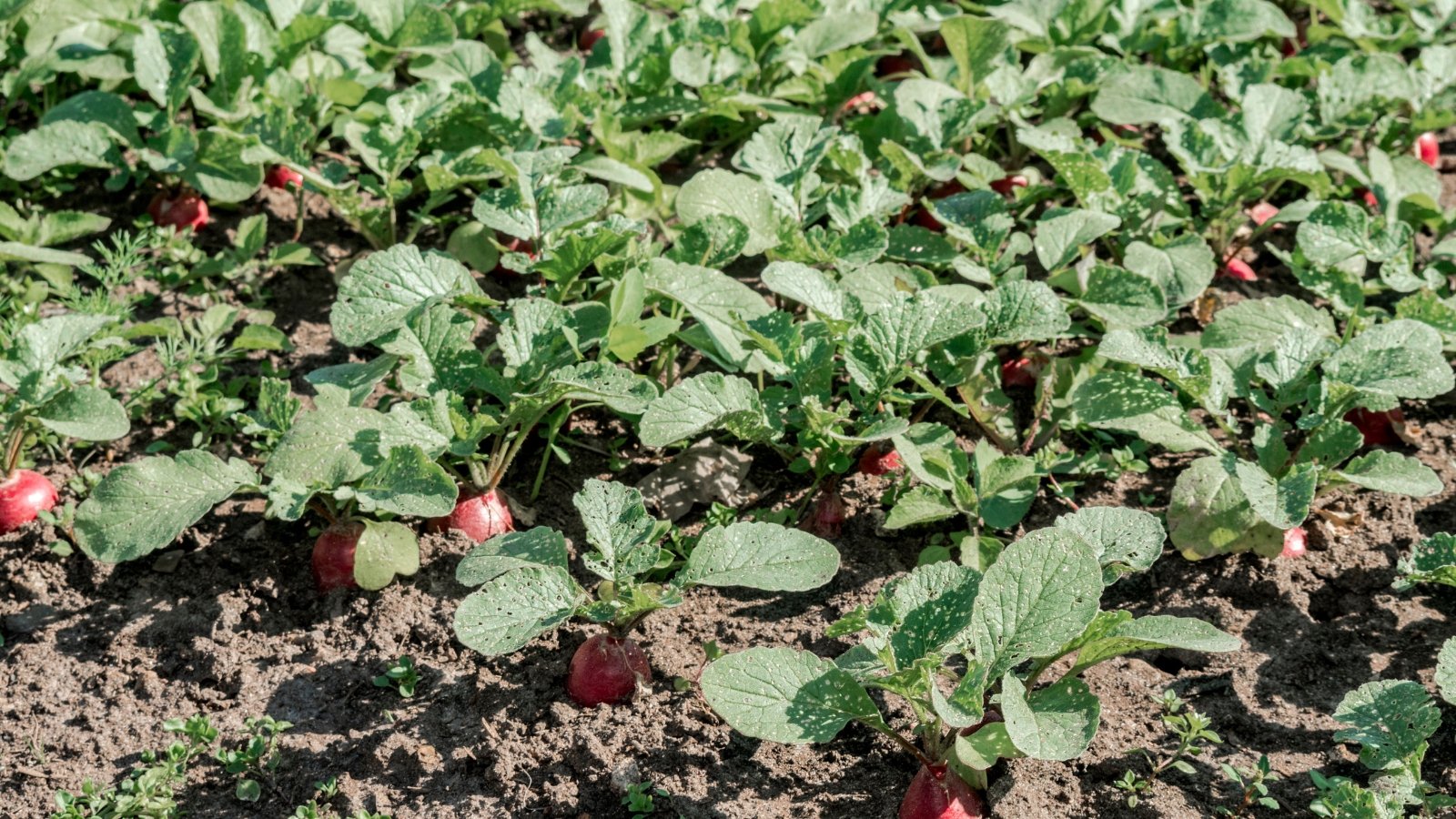
Radishes are crunchy, spicy little root vegetables that are particularly fun to grow. You only need a little bit of space (you can grow around 16 small radishes in one square foot), and they’ll be ready to harvest in less than a month.
These root vegetables are also frost-tolerant. In fact, they’ll survive until the temperature is consistently below 20°F (-7°C). Not only can you plant these in October, but also, you might be able to plant another round or two afterwards, especially in mild climates.
Many gardeners believe that radishes grown in fall taste better than those grown in spring. Since they’re so compact and so fast, it’s worth a shot. ‘Cherry Belle’ is an heirloom cultivar that needs only 24 days of your time. They’re perfect on salads and as pickles.
Broccoli
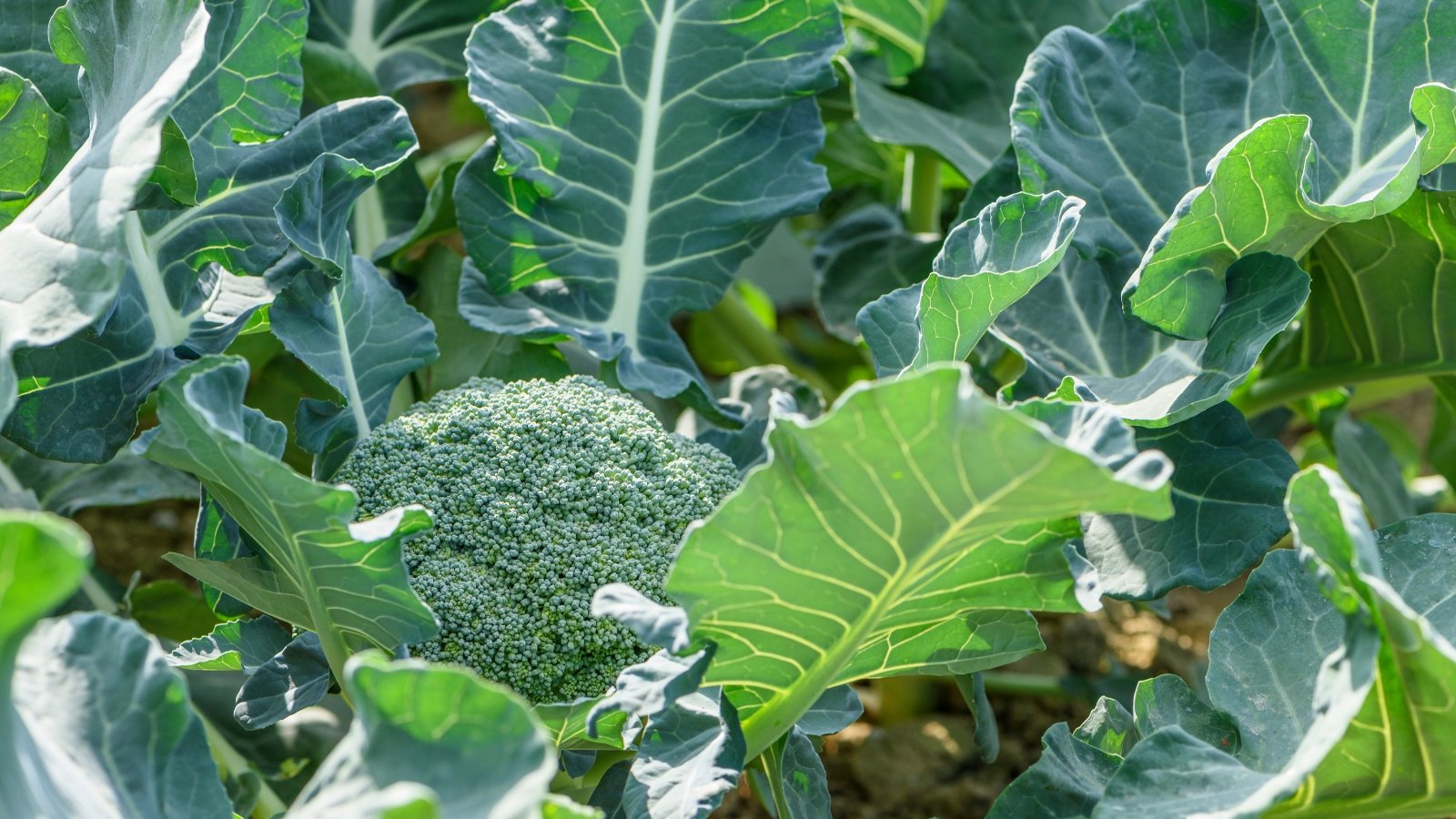
Broccoli is an October option in slightly warmer zones. These vegetables can take around 80 days to mature from seed, depending on the variety, and they’re best harvested before a hard freeze. Broccoli will keep growing after a frost or two, but a hard freeze can kill the crown of the plant.
Like spinach, broccoli is a cold-weather crop that bolts once the temperatures rise, so it must grow in the spring or fall. Some have trouble growing broccoli, though this growth habit gives you two chances each year to give it a shot.
Plant broccoli in a full sun location that gets at least eight hours of direct sunlight, and make sure it’s in rich, well-draining soil. Cultivars such as ‘Belstar’ offer more than one harvest with sizable offshoots. You could also try your hand at growing broccoli raab, such as ‘Rapini.’
Garlic
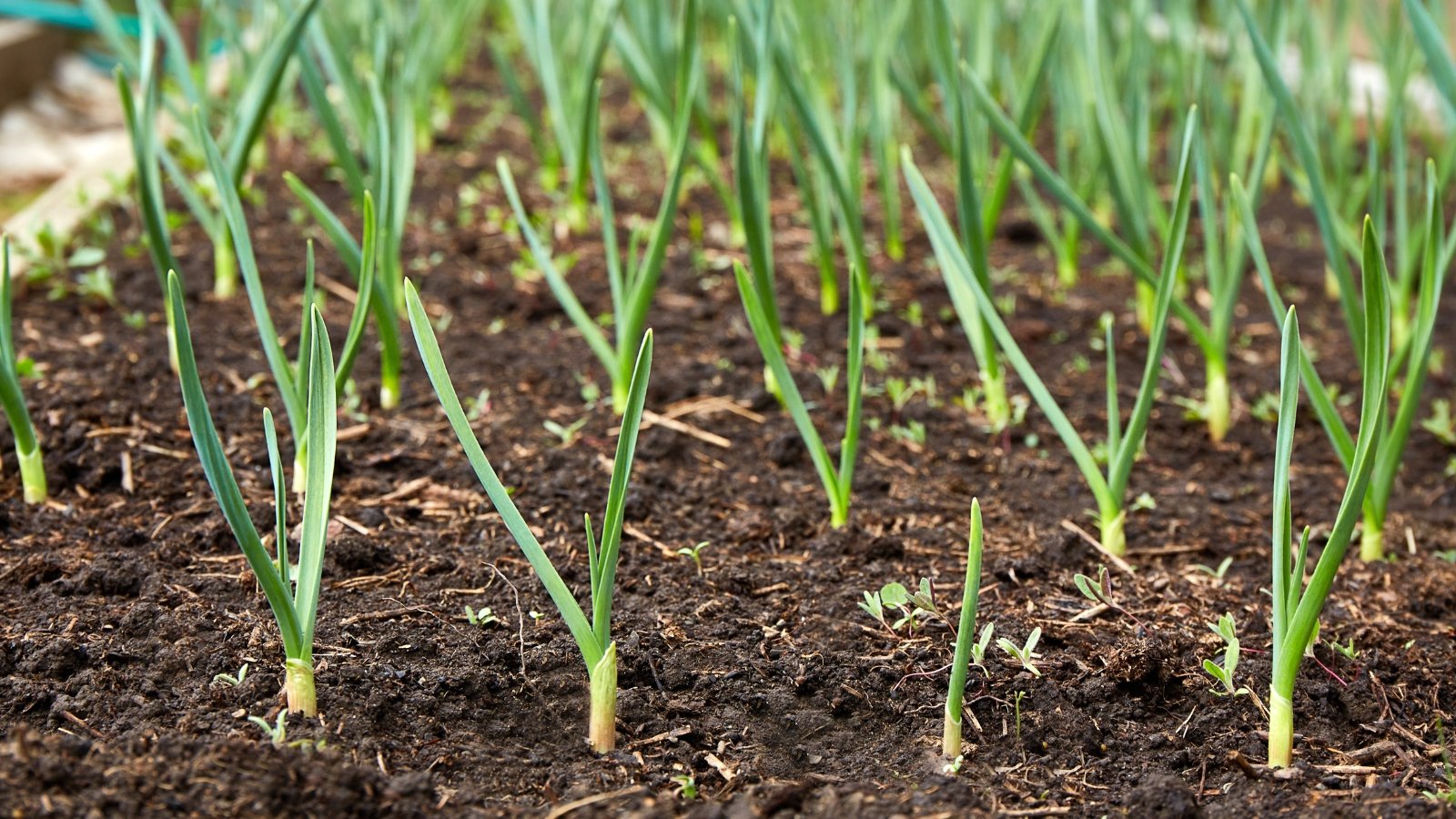
Garlic is typically planted in the fall, which gives the bulbs all winter to form in time for a spring harvest. While northern growers can start fall garlic as early as September and southern growers can start it as late December, most growers can get their garlic in the ground in October.
Plant garlic bulbs in well-draining, fertile soil. If you’re planting in a garden bed that may be out of nutrients after a long summer growing season, you may want to amend the soil with compost beforehand.
Avoid the temptation to start your garlic from store-bought cloves, which won’t work very well. Instead, seek out a reputable seller in your area or find one online. Many online retailers will send cloves to you in October. From Sicilian artichoke softneck to elephant hardneck, you have many options.
Onions
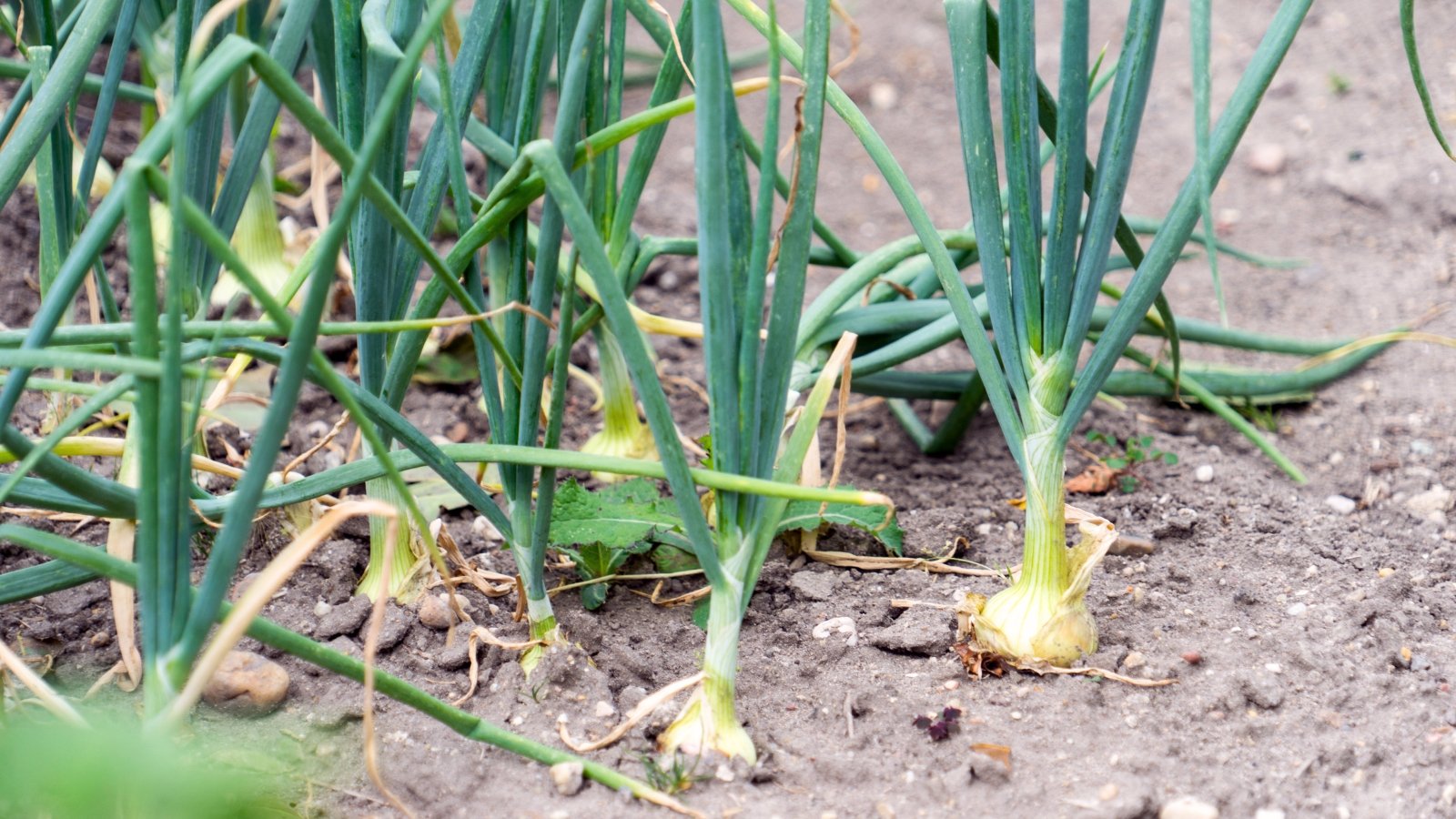
You can plant onions in autumn similar to garlic, allowing the bulbs to form all throughout the winter months. In spring, you should have onions ready to harvest, cure, and store. You can also plant them again in spring for a fall harvest—and the onion cycle continues.
Full sun is ideal for optimal growth. Make sure onions are in a location where they will get a lot of sunlight, and consider that the days will be shorter in winter when planning. Plant onions in a bed that has fertile, loose soil and add compost to it beforehand if needed.
If you’re in a cooler zone, perhaps zone 6 or cooler, mulching the onions over winter can help them survive. Straw is a nice, clean option, and simple shredded leaves can also work. Don’t cover the plants entirely with mulch so that they still have access to sunlight.
Bok Choy
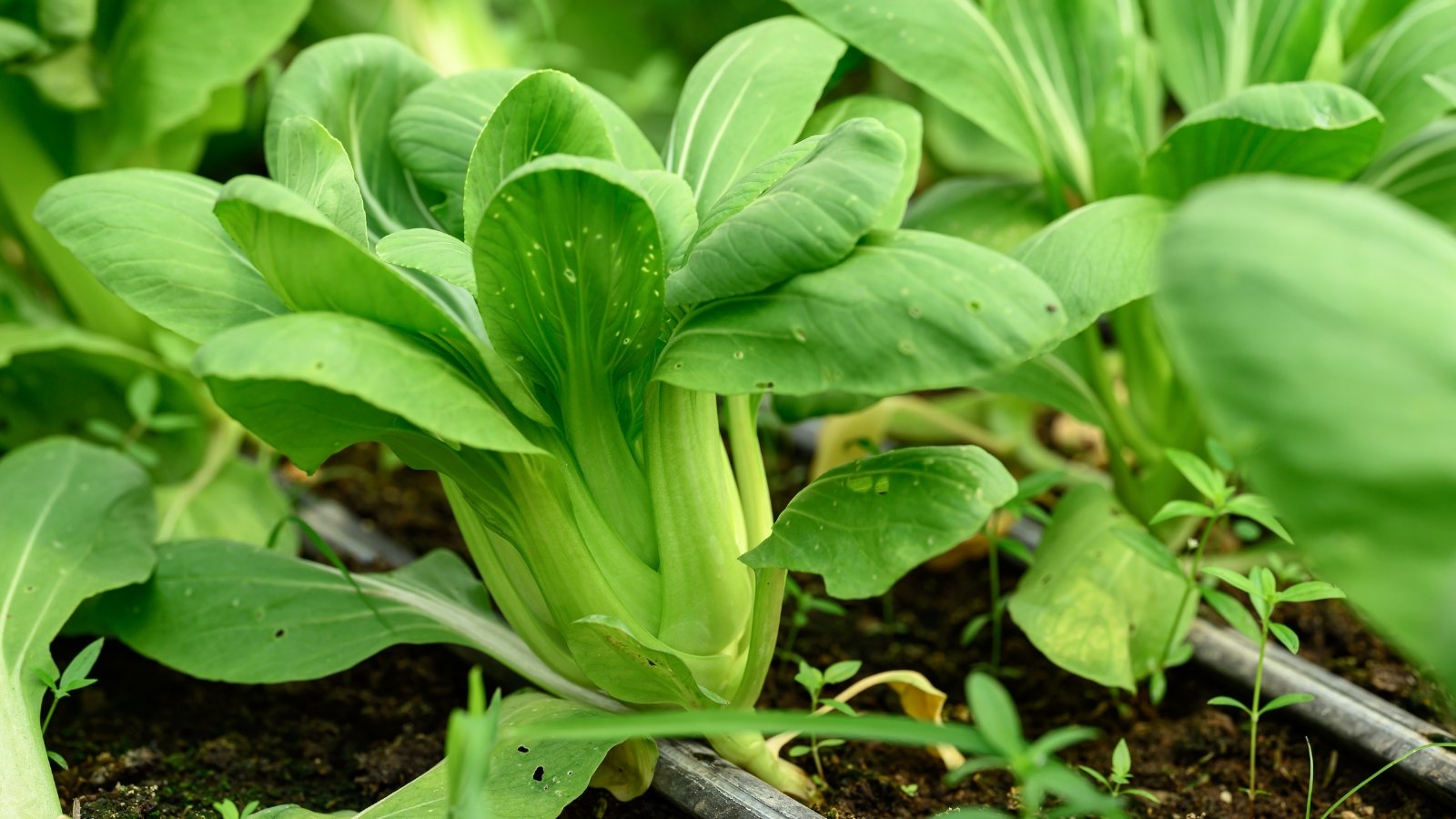
Bok choy is so easy to grow, and it loves to grow in fall weather. The ideal temperature range for bok choy is in the 50s and 60s (10-16°C), and it will survive unexpected frosts that occur overnight. Smaller cultivars such as ‘Toy Choy’ can be ready to harvest in as early as one month.
American gardeners are becoming more familiar with bok choy, a type of Chinese cabbage commonly used in many dishes. You can use it to make your own kimchi, and it’s delicious in soup. As the days get colder, there’s no easier dish than some ramen noodles with a fresh head of bok choy from your fall garden.
Plant bok choy in moist but well-draining soil in any spot that gets at least a couple hours of sun per day.
Beets
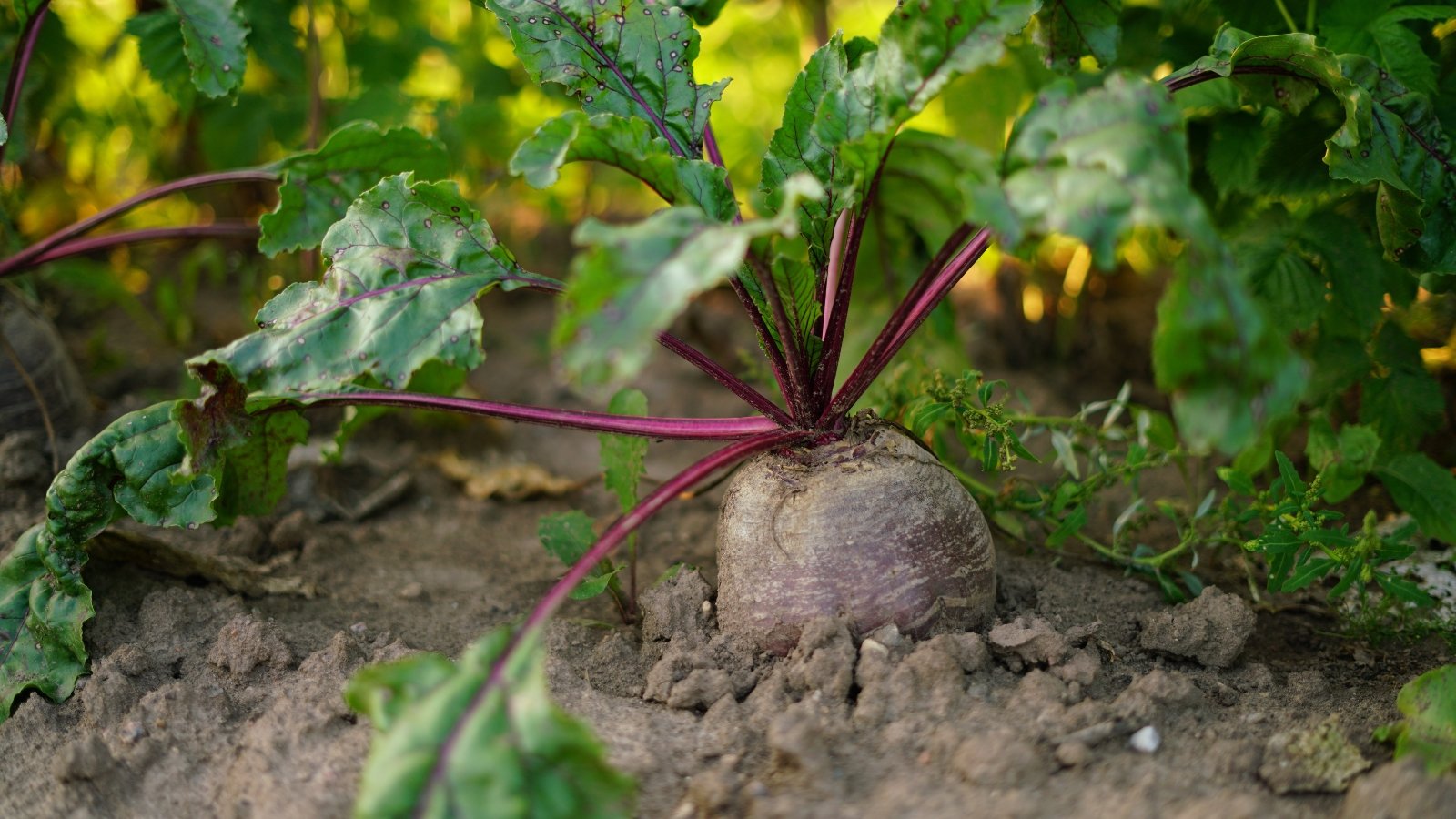
Beets are yet another root crop that you can plant in October and grow through winter. You can sow seeds about a month or so before your first frost and even try succession planting after that, especially in warmer zones.
Few crops offer as much color and vibrancy as beets, especially this time of year. Classic red beets like ‘Detroit Dark Red’ have deep, opaque color, while ‘Chiogga’ beets are ringed with red and white inside.
If you’re on the fence about beets, give golden beets a try. Golden beets such as ‘Touchstone Gold’ aren’t as earthy as regular beets. They have a milder, sweeter flavor. Unlike red beets, golden beets also won’t stain your hands and cutting boards pink.
Cauliflower
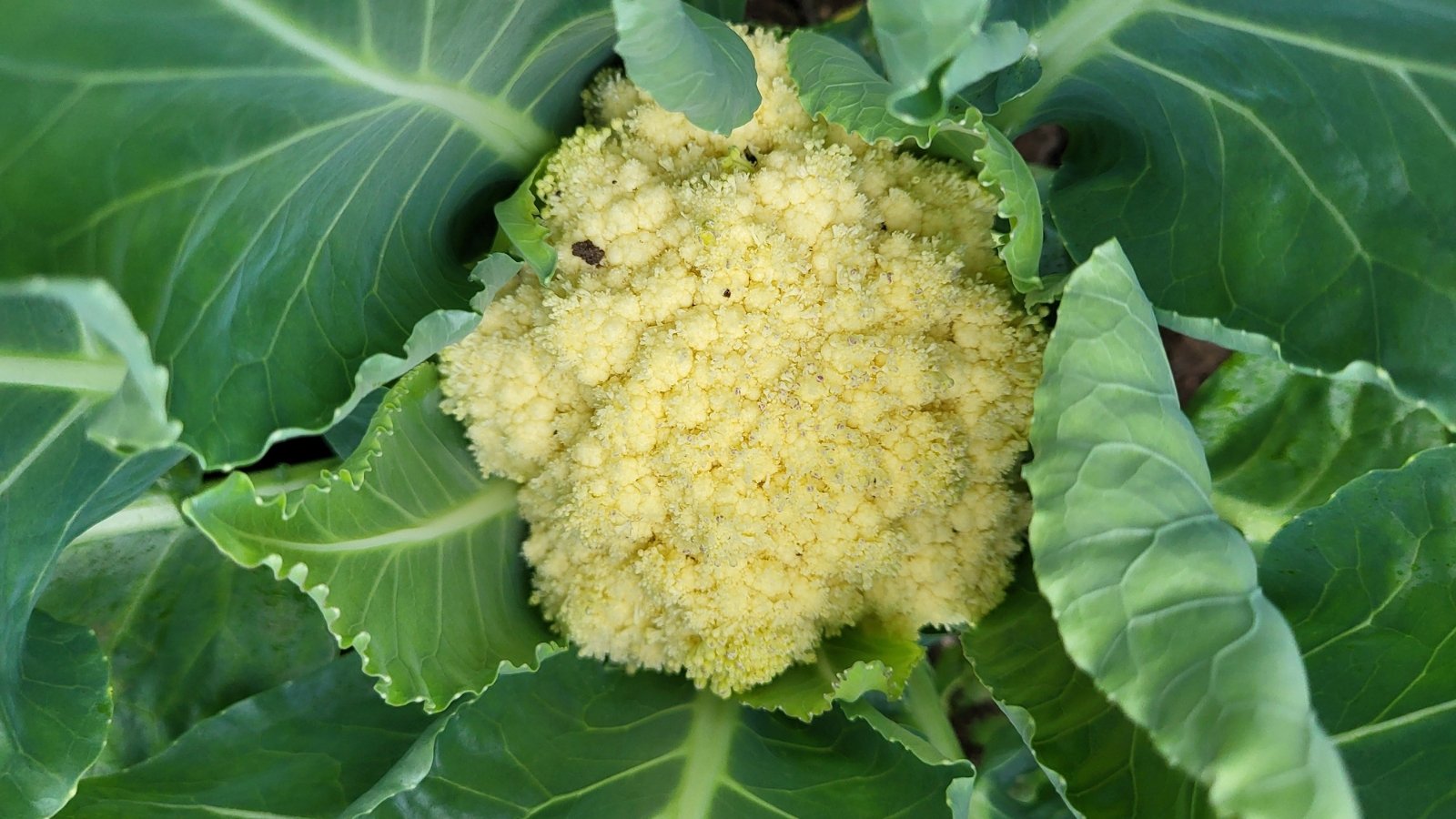
Cauliflower is another cool-season brassica, just like broccoli, that does not tolerate the heat. It’s best grown in spring or in fall, making October the perfect time to get started. Growing cauliflower in fall helps you avoid bolting, among other high-temperature problems like head splitting.
You should plant these crops in an area that gets at least eight hours of direct sunlight per day. They like moist, fertile, and well-draining soil. Amend the soil with compost or another amendment beforehand if necessary.
‘Twister’ cauliflower is a great cultivar if you hope to gather a nice, white head of cauliflower without any discoloration. If you like some variety in the kitchen, give ‘Romanesco’ a try, which is somewhere between cauliflower and broccoli.
Lettuce
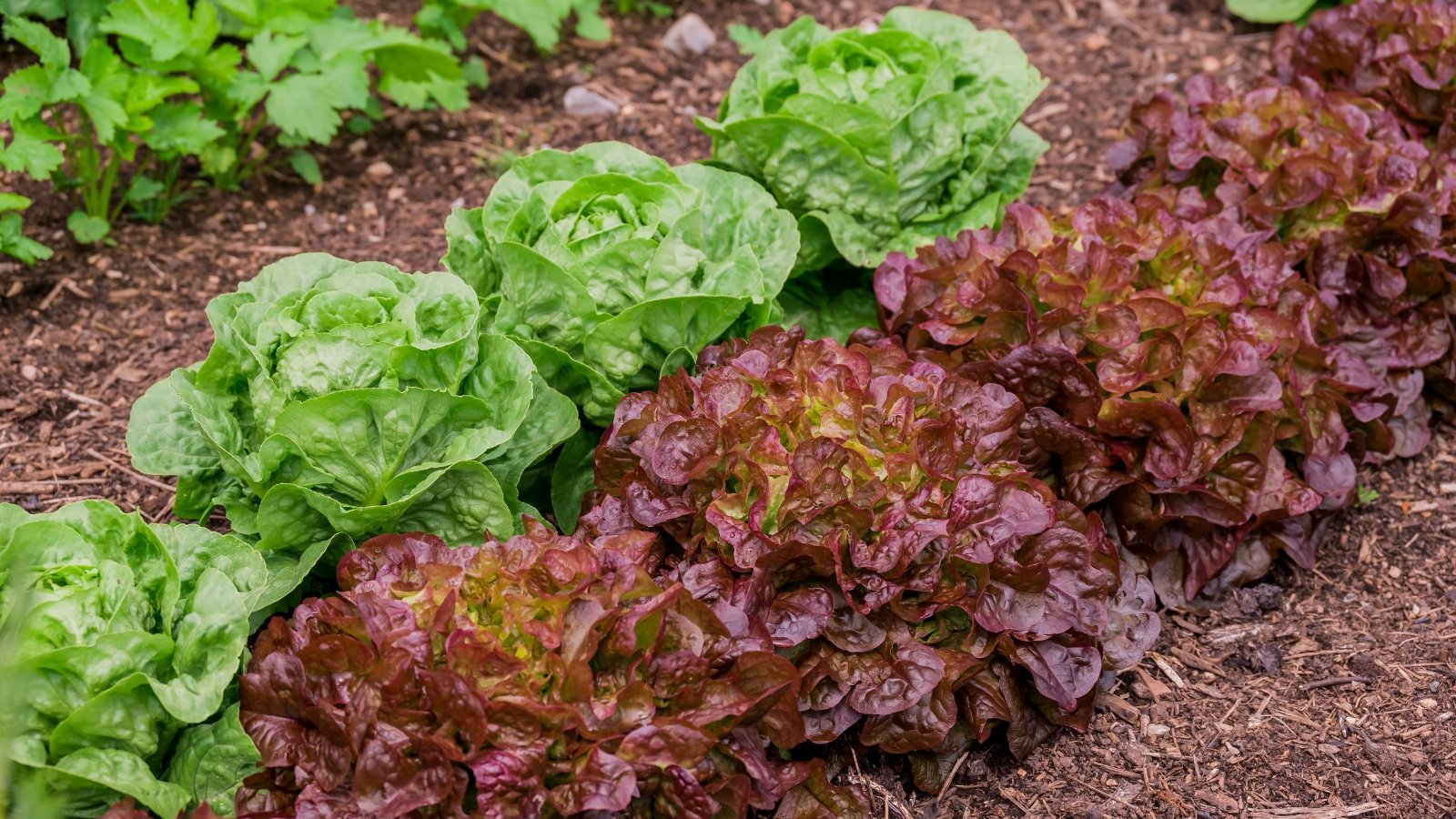
Just because it’s fall doesn’t mean it’s too late to enjoy fresh-from-the-garden meals. You can grow tons of lettuces this time of year, gathering the fresh leaves day-of to create elaborate salads that couldn’t be more crisp and fresh.
Lettuce grows very quickly, and since you can harvest the leaves at any time and any size, it’s super convenient for this time of year. Most lettuces will survive until the temperatures reach about 20°F (-7°C).
‘Buttercrunch’ is ready in as early as 20 days, with one small head making about one salad. ‘Vivian’ romaine, on the other hand, is much larger but still may be ready to harvest in about a month. If you hope to use lots of lettuce or feed multiple people, start a lot of seeds.
Turnips
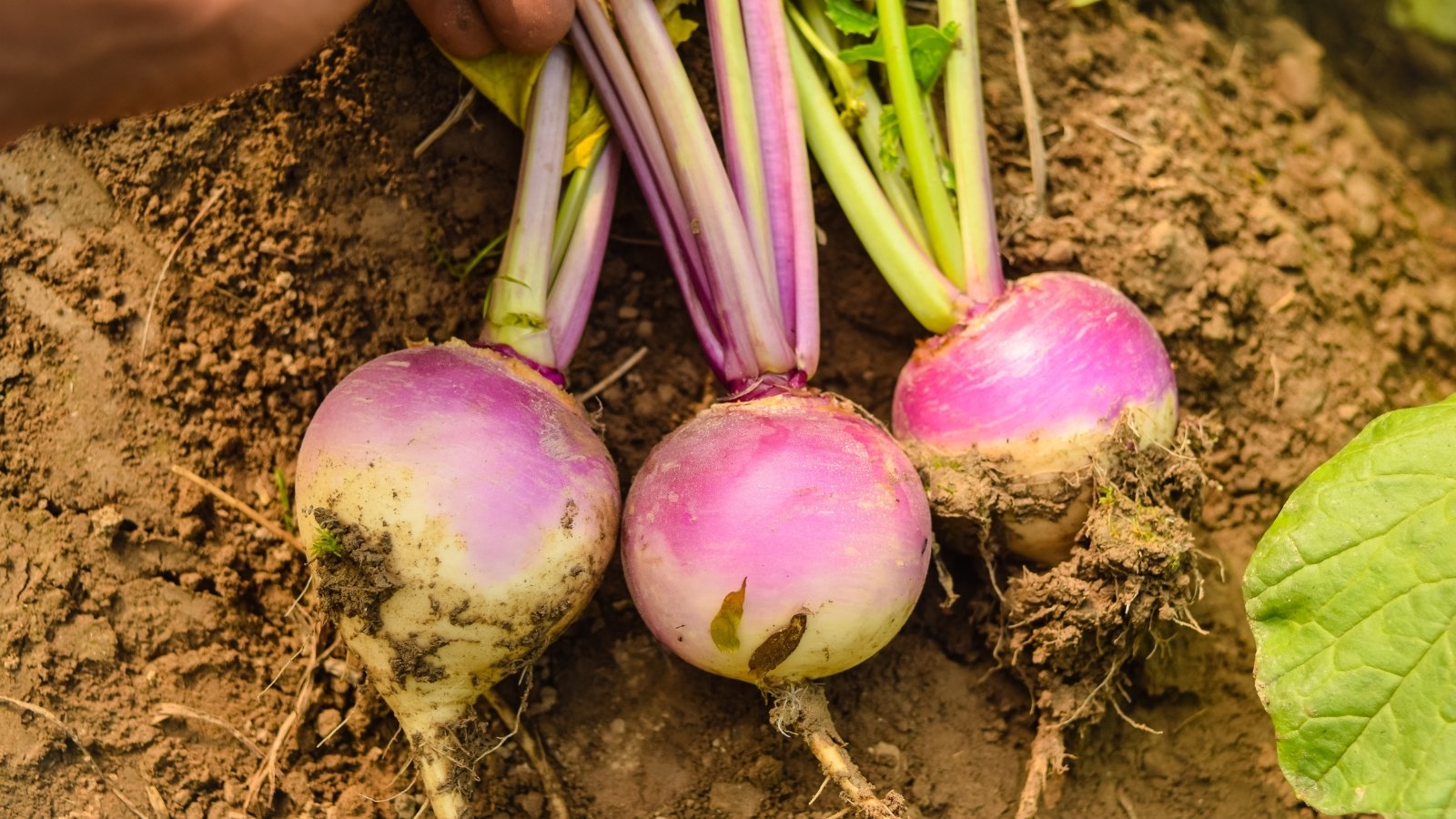
Turnips are root vegetables that gardeners can plant in spring or in fall, but most gardeners say they taste better when planted during the fall season, making October the ideal time to start turnip seeds. You can also harvest them a little early if you like, as baby turnips.
These vegetables grow best in full sun. Depending on which turnips you choose, they may be ready for you to eat in as little as a month, but there’s probably no reason to rush. Turnips are not only first-tolerant but also can survive temperatures down to 15°F (-9°C).
For round, white baby turnips, try ‘White Lady,’ or for turnips with some color that are a bit bigger, give ‘Purple Top’ a try.
Kale
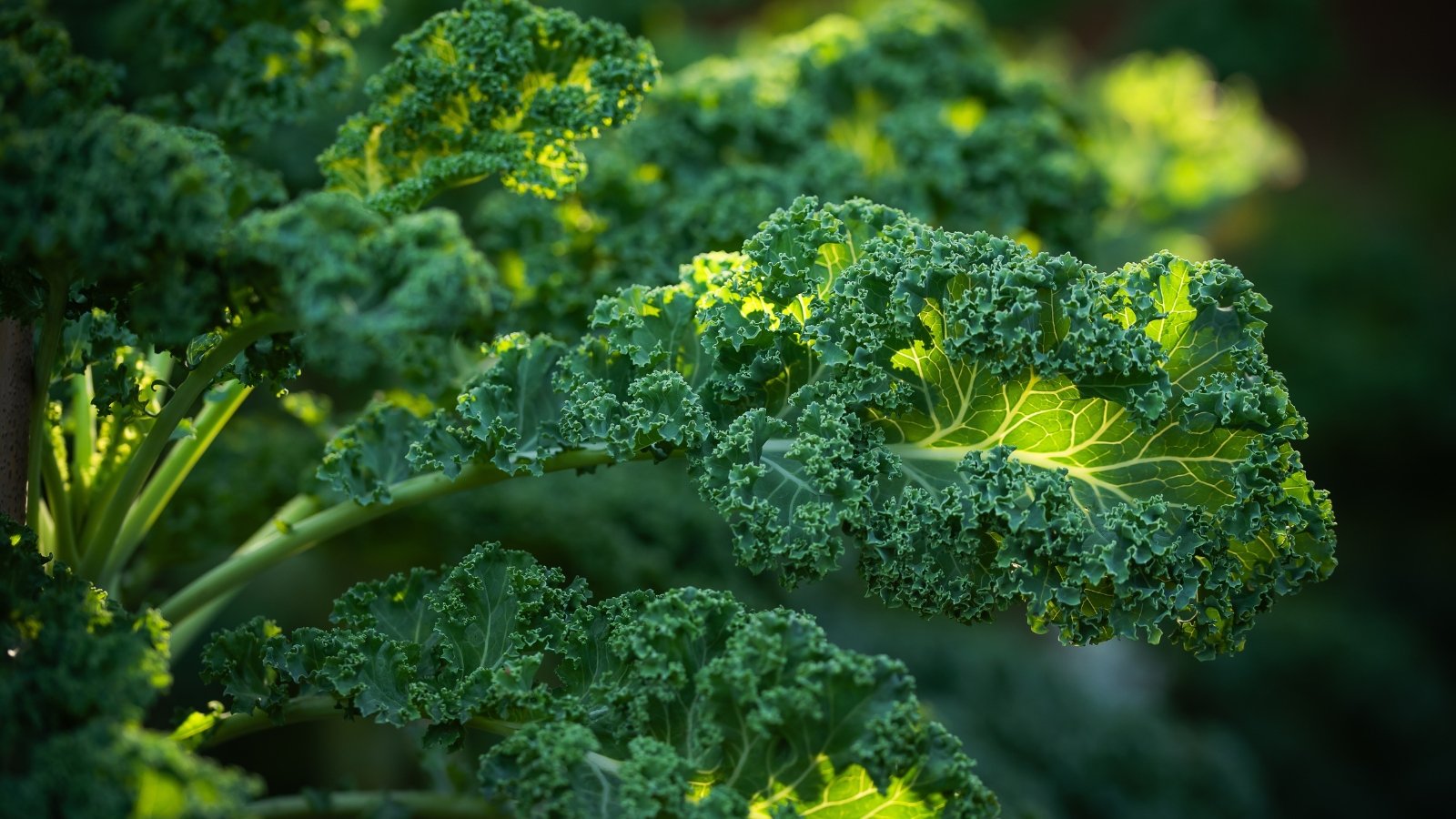
Kale is yet another brassica, grown for its leafy greens. It thrives in cool weather, so you can plant it in spring or in fall. October is an ideal time to plant kale crops, allowing you to gather the leaves for salads, sandwiches, and kale chips well into winter, depending on your climate.
For optimal growth, plant kale in a full sun location in moist but well-draining soil. Kale flourishes in soil dense with organic matter, so add some compost or granular natural fertilizer when planting.
There are countless varieties of kale, including both edible and ornamental, with different leaf sizes, colors, and textures. ‘Red Russian’ is a standby that gets sweeter after frost, and heirloom ‘Lacinato’ pairs well with pasta.
Cabbage
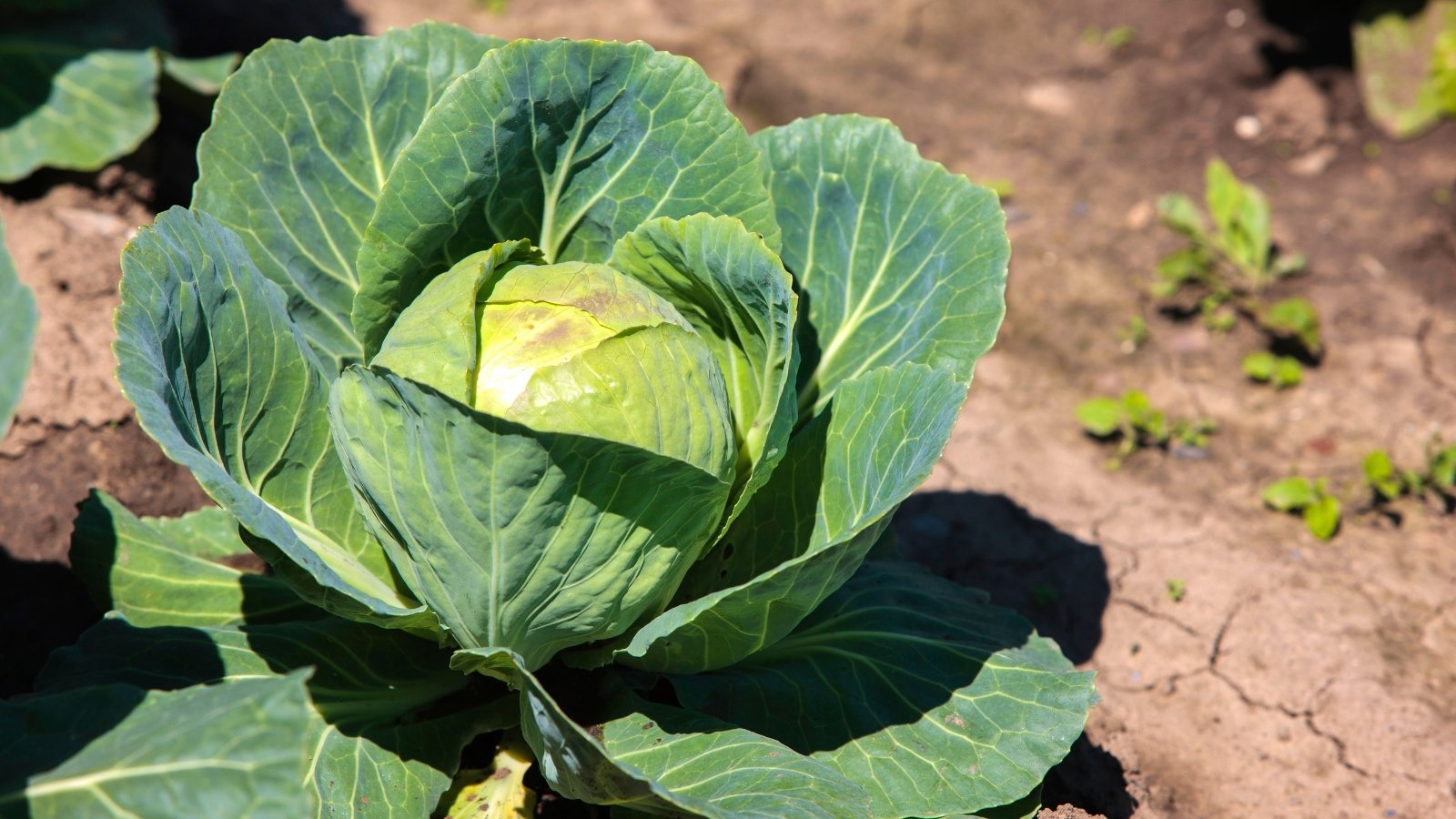
The ideal temperature range for cabbage is 60 to 70°F (16-21°C), making autumnal weather perfect. You can direct sow cabbage about two months before your last frost date, which is in October for many.
If you start your cabbage a little late for your zone, don’t worry. Cabbage can handle a few frosts, and mature cabbage can even survive freezing temperatures. What’s more important is that you give the cabbage enough space.
Some cultivars, like ‘Copenhagen Market,’ will reach about two feet wide with a central head that’s up to eight inches in diameter. If you prefer a red cabbage, try ‘Red Acre,’ with 7-inch heads in a classic purple color.
Chard
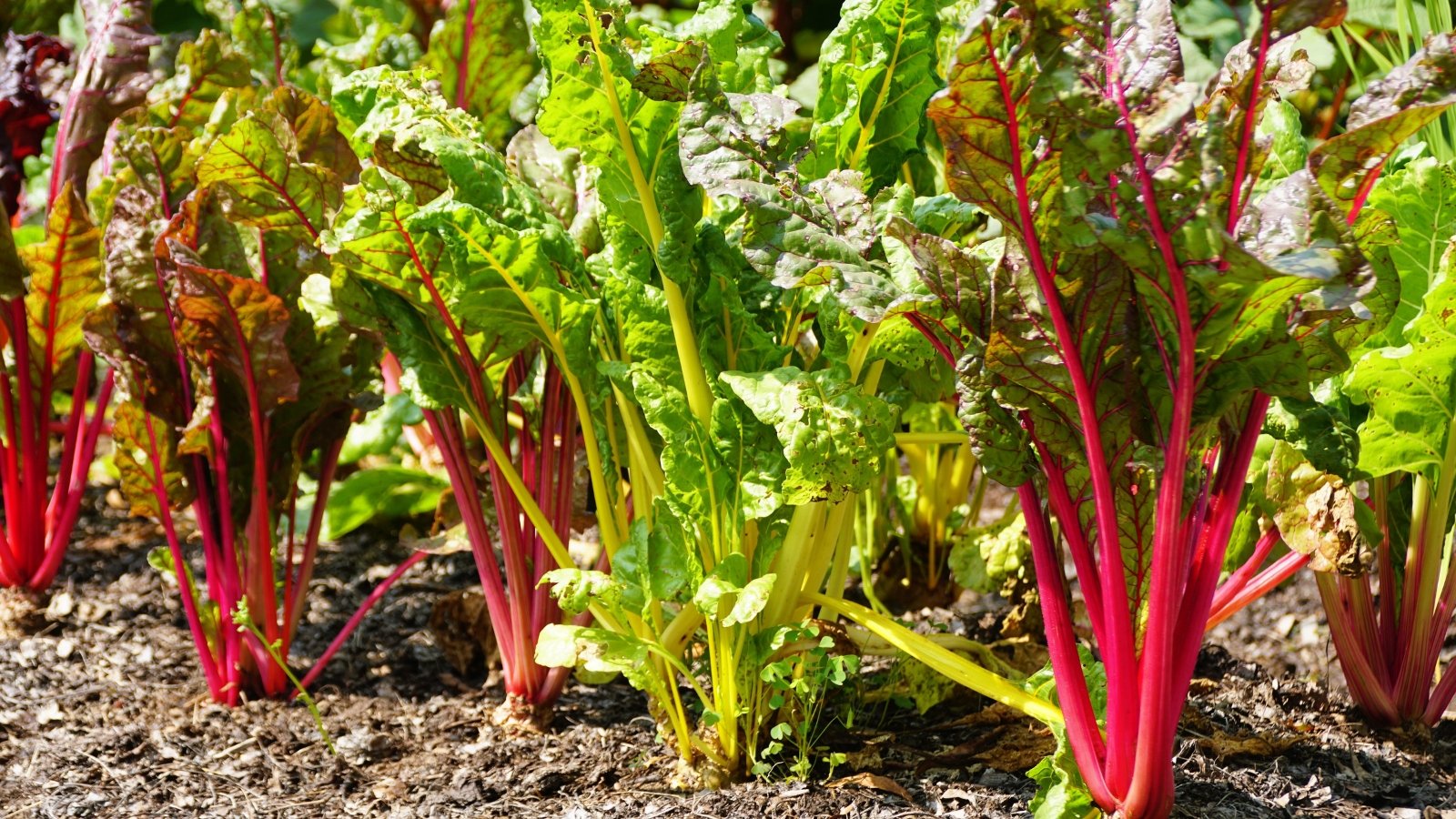
Swiss chard is a multi-tasker in the garden schedule. You can grow it in spring, and it will make it all through summer, with no fear of bolting. That said, you can also grow it in fall, and chard will stand up to chilly conditions so you can enjoy it into winter.
Swiss chard and beets are two versions of the same species. While beets are cultivated for the root, chard is cultivated for the leaves. This is why chard has an earthy, beet-y flavor.
It also might be why chard is so pretty, with standard red beet-like veins. Get a packet of rainbow chard seeds, such as ‘Celebration’ to add pops of color to your winter garden.
Brussels Sprouts
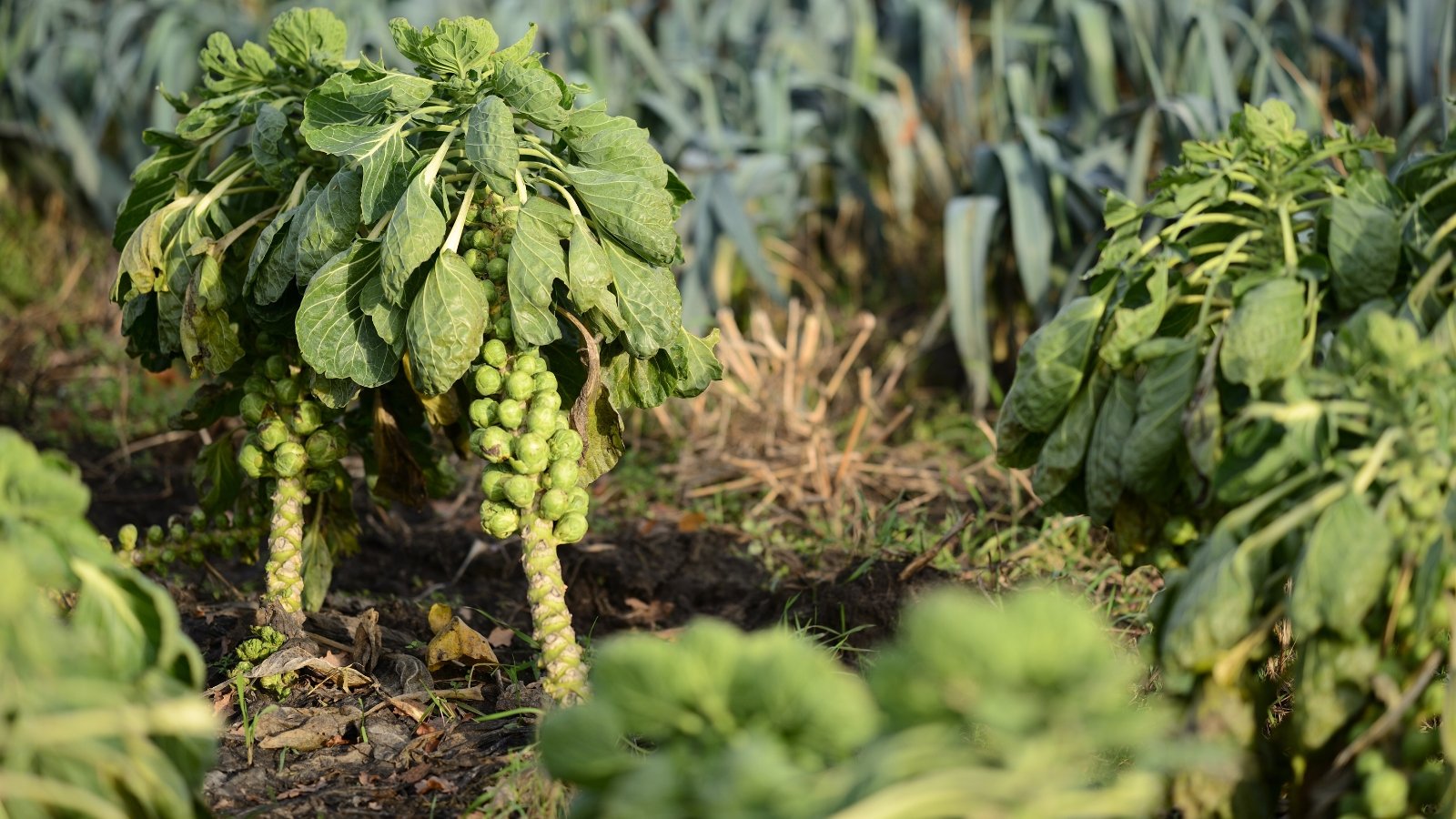
Brussels sprouts can be started in October if you are in a warmer zone. While most of the veggies on the list have short growing seasons, Brussels sprouts are the opposite. They can take as long as 120 days to mature.
If you are in zone 9 or 10, try planting Brussels sprouts this fall. They will thrive in full sun or partial shade, and you need to plant them in well-draining soil. Keep an eye out as the sprouts develop. Be ready to harvest the oldest sprouts about three or four months from the planting date.
A long growing season can mean a large window of time for pests and diseases, so seek out a resistant variety like ‘Silvia.’
Arugula
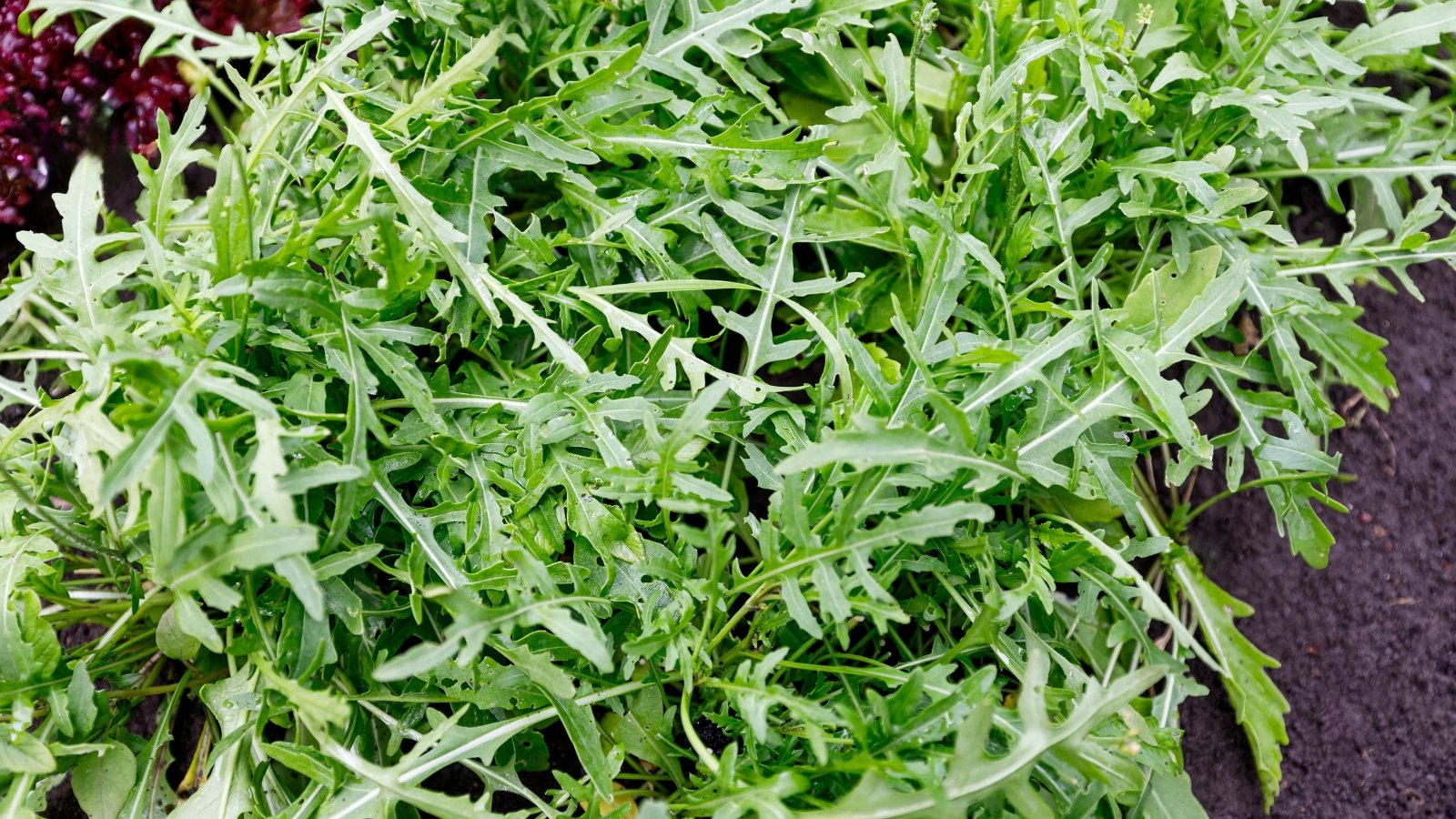
Another salad green you can start this time of year is arugula, otherwise known as rocket. Arugula matures in about a month, so you’ll be gathering greens for salads before you know it. This veggie is not only first tolerant but can also make it through a hard freeze or two.
Among all the brassicas of cool-season gardening, arugula adds some variety. It has a peppery flavor that stands out, and it’s delicious both raw and steamed.
Arugula only needs a few hours of sun per day to grow, and it’s not too picky about soil, either. While lots of cool-season greens require well-draining soil, arugula tolerates occasionally wet soil and even some clay.

